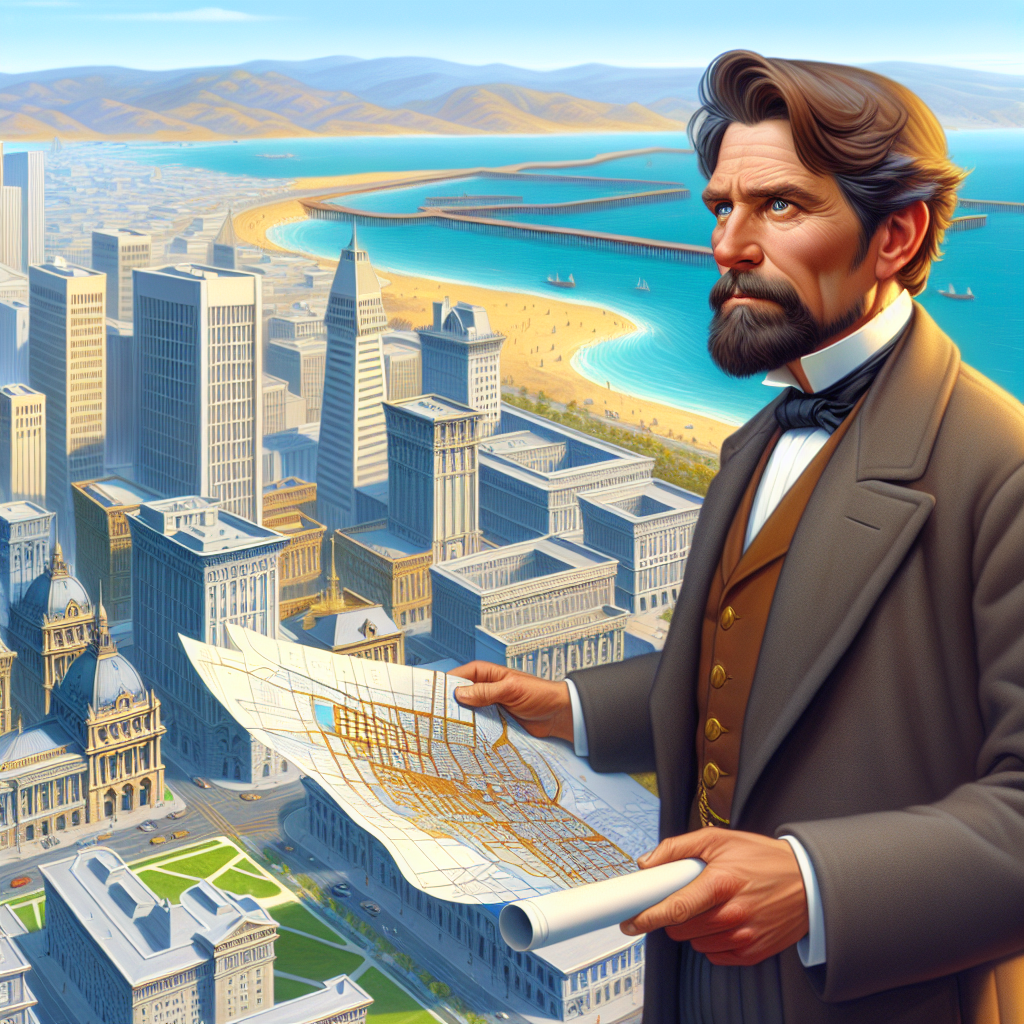The Enigmatic Legacy of Jasper O'Farrell
Jasper O'Farrell, a name that might not ring a bell for many, was a pivotal figure in the development of early California. Born in 1817 in County Wexford, Ireland, O'Farrell made his way to the United States and eventually found himself in the bustling, chaotic world of 19th-century San Francisco. It was during the Gold Rush era, around the mid-1800s, that O'Farrell's influence became most pronounced. He was a surveyor and civil engineer, and his work laid the foundation for the modern layout of San Francisco. His most notable contribution was the controversial decision to extend Market Street, which remains one of the city's main thoroughfares today. This decision, while practical, was met with resistance from property owners whose lands were affected, highlighting the tension between progress and personal interests.
O'Farrell's story is a fascinating one, not just because of his professional achievements but also due to the complex socio-political landscape he navigated. The Gold Rush brought a flood of people to California, each with dreams of striking it rich. This influx created a melting pot of cultures, ideas, and conflicts. O'Farrell, with his Irish immigrant background, was part of this diverse tapestry. His work required balancing the needs of a rapidly growing city with the rights and concerns of its residents. This was no easy task, as the city was expanding at an unprecedented rate, and land disputes were common.
The decision to extend Market Street was particularly contentious. O'Farrell envisioned a grand boulevard that would serve as a central artery for the city, facilitating movement and commerce. However, this vision came at a cost. Property owners who found their lands bisected by the new street were understandably upset. They argued that the extension devalued their properties and disrupted their lives. O'Farrell, on the other hand, believed that the long-term benefits for the city outweighed these individual grievances. This conflict is emblematic of the broader challenges faced by urban planners, who must often weigh the greater good against personal losses.
Despite the controversy, O'Farrell's impact on San Francisco is undeniable. His work helped shape the city into a major urban center, setting the stage for its future growth. Market Street, with its iconic cable cars and bustling activity, is a testament to his vision. Yet, it's important to acknowledge the voices of those who opposed his plans. Their concerns were valid, and their resistance highlights the importance of considering diverse perspectives in urban development.
O'Farrell's legacy is a reminder of the complexities inherent in progress. His story invites us to reflect on the balance between innovation and empathy. As cities continue to grow and evolve, the lessons from O'Farrell's time remain relevant. Urban development is not just about building infrastructure; it's about creating spaces that respect and include the people who inhabit them.
In today's world, where rapid urbanization and gentrification are pressing issues, O'Farrell's experiences offer valuable insights. They remind us that while change is often necessary, it should not come at the expense of community and heritage. As we look to the future, we can learn from the past, striving to build cities that are not only efficient but also equitable and inclusive.

